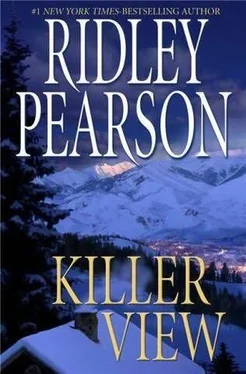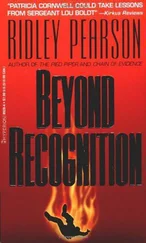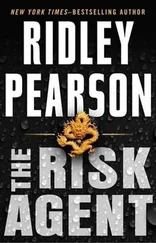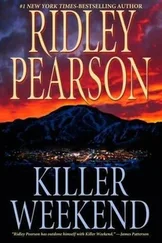Cutter looked as if Walt had hit him.
“Do we even know if she’s actually with the CDC?” Walt asked. “I never checked her credentials.”
“Sweet Jesus!”
“Trust no one, Danny,” Walt said. His voice continued inside his head: Not even me.
“MAY BE I’M NOT EXPLAINING IT RIGHT.” JOHN BORTON WAS a big, bearish man, with red hair, wide eyes, and an unexpectedly kind and soft minister’s voice. He’d started out as water master for the water district, inspecting headgates on irrigation canals, reporting violations, and locking flows at levels where they belonged. Then he’d served as an inspector for the state’s adjudication process-the redistribution of stream and river water to private landowners-that had taken five years and nearly cost a few lives. Now he was the water master for the central district, and, as such, ruled like a feudal lord over million-dollar ranches and their century-old legal rights to tap into and drain both the surface waters as well as the underground aquifer that flowed for thousands of miles, from British Columbia to Mexico.
His office was small, even by government standards. The water district was housed in a building that also leased space to the Nature Conservancy.
Walt and Borton were leaning on a worktable that held Fiona’s aerial photographs, a satellite image of central Idaho, and a topographical map of a fifty-square-mile region surrounding Craters of the Moon and reaching to the Pahsimeroi Valley.
“Think of it as an eddy,” Borton said. “Just like in open water, but, in this case, it happens to be underground. You’ve got this tremendous flow of water, sometimes thousands of feet below the surface, moving like a river north to south. Huge volume. It pushes up quite close to the surface for much of the route. But we know it always seeks the path of least resistance, as well as the lowest spot it can find. This range,” he said, indicating a spur of mountains that pushed toward the alluvial plain and the desert that housed the Idaho Nuclear Laboratory, “acts as a barrier, just like a levee or breakwater.”
“But you said the flow of the water is north to south,” Walt reminded. “And the elevation of the Pahsimeroi is higher than the desert. My interest is whether water could get from here,” he said, indicating the desert, “to here.” He pointed to the center of the Pahsimeroi Valley.
“And, logically, that’s impossible. How can water run uphill?” Borton dragged the satellite image closer. “But some rivers flow to the north in the Northern Hemisphere, don’t they? And so do some aquifers. In this case, it’s the result of a subterranean fault and a promontory.” He pointed out a mountain spine on the satellite image. “This looks like a weather map, but these gray swirls are actually the underground water-part of the Northern Rocky Mountain Intermontane Basins system-that exists thousands of feet below the surface and is one small part of a freshwater source that stretches from Canada all the way to Mexico. The Big Lost River disappears completely under the desert here and doesn’t resurface for hundreds of miles. But the force of that downward pressure has the same effect as a narrowing river: increased speed. That pushes a great quantity of water west and around this underground promontory. The flow is further restricted by faults on both sides, and, with nowhere to go, it flows north for nearly seventy miles, until most of it is absorbed into the more porous strata of the upper Pahsimeroi.”
For security reasons, the satellite image had grayed out the surface topography of an area that included the INL, but Walt pulled Fiona’s photograph alongside the image and visually compared the two. The long, feathered flow that was the rogue branch of the aquifer curled and turned directly beneath the area where he and Fiona had spotted the after-hours earthmoving equipment. For a moment, he just stared.
“This help any?” Borton asked, made uncomfortable by the long silence.
Walt looked up at the man, then back to the various pictures. “Does the water in the aquifer ever reach the surface of the Pahsimeroi Valley ’s floor? Is it part of the groundwater?”
“That’s a much bigger question,” Borton said, running his stubby finger across the satellite image, “because there’s a constant surface flow north to south-all the winter melt slowly finding its way down through sediment and into the valleys. But that water can prove itself seasonal and intermittent, as we know, and the reason this gets more complicated is that some of the ranchers have drilled very deep wells. Those deeper wells, eight hundred to as much as ten thousand feet, are directly tapping into the aquifer, not the surface water. It presents a particularly difficult issue for us.”
“Do we know the locations of those deeper wells?” Walt asked.
“We would have a list of at least some of them in the state, because they’ve been the subject of adjudication.”
Not once had Borton asked what any of this was about, though Walt sensed his curiosity.
“How hard would it be for me to get hold of that list?” Walt asked.
“It’s a public record,” Borton returned quickly, having anticipated the request. “I don’t have those documents here, but the state water board should have copies.”
“That helps.”
“I do happen to have computer access,” Borton said with a twinkle in his eye. “And a printer. But any data that proved useful to you would have to eventually be sourced elsewhere. It didn’t come from me, Walt.”
“Understood.”
Borton glanced around the quiet office. “Wait right here,” he said.
WHEN WALT’S ATTEMPTS TO REACH GAIL FAILED, HE RESISTED using the power of his office to find her, knowing any such personal use would be held against him. Instead, he sought out his divorce attorney, Jan Wygle, in an attempt to get his daughters returned.
As he sat in the officer’s reception, an NPR report out of Boise caught his attention.
“Today, the state senate’s environmental impact committee will hear public comments on the Semper Group’s management of the Idaho Nuclear Laboratory. Conditions of Semper’s contract with the federal and state governments require semiannual review of health and safety issues in the workplace. Semper took over management of the nuclear facility from the troubled General Industries two years ago and was instrumental in the fifty-square-mile facility’s third name change in just six years. More now from our Capitol correspondent, Lisa Laird.”
The reporter continued the story, reminding listeners of the controversial shipments of overseas nuclear waste to the INL. Said to be for temporary storage, much of the Japanese and Korean low-level waste had been held in drums above ground in central Idaho for nearly a decade. Semper was said to be in negotiations to extend the program by accepting Russian low-level waste. Walt’s ears pricked up when Hillabrand’s name was mentioned. He was to be the committee’s chief witness, testifying at three P.M. A public forum.
He faced a two-hour drive or a thirty-minute flight. His first phone call was not to Nancy, nor to Barge Levy, who he hoped might fly him over to Boise now that his own pilot’s license had been suspended. It was instead to Danny Cutter. His request caused Cutter to invoke a moment’s silence on the other end.
“You want what ?” Cutter had asked.
“You heard me right,” Walt answered.
“I don’t know if that’s possible.”
“Find a way,” Walt told the man. “Both our futures may depend upon it.”
WALT ARRIVED AT the statehouse in Boise wearing a crisp, heavily starched uniform, his shoes and belt polished to gleaming, his hardware sparkling. It was three-twenty by the time he slipped through the door of the hearing room, where a dais held five state senators, four men and a woman. The room’s interior was a magnificent throwback to the grand statehouses of the nineteenth century: aged mahogany and walnut panels, a marble floor, and brass chandeliers. Roger Hillabrand sat at a long table, front and center, with his back to the main doors, the fabric of his suit shining. He took no notice of Walt’s entrance.
Читать дальше












